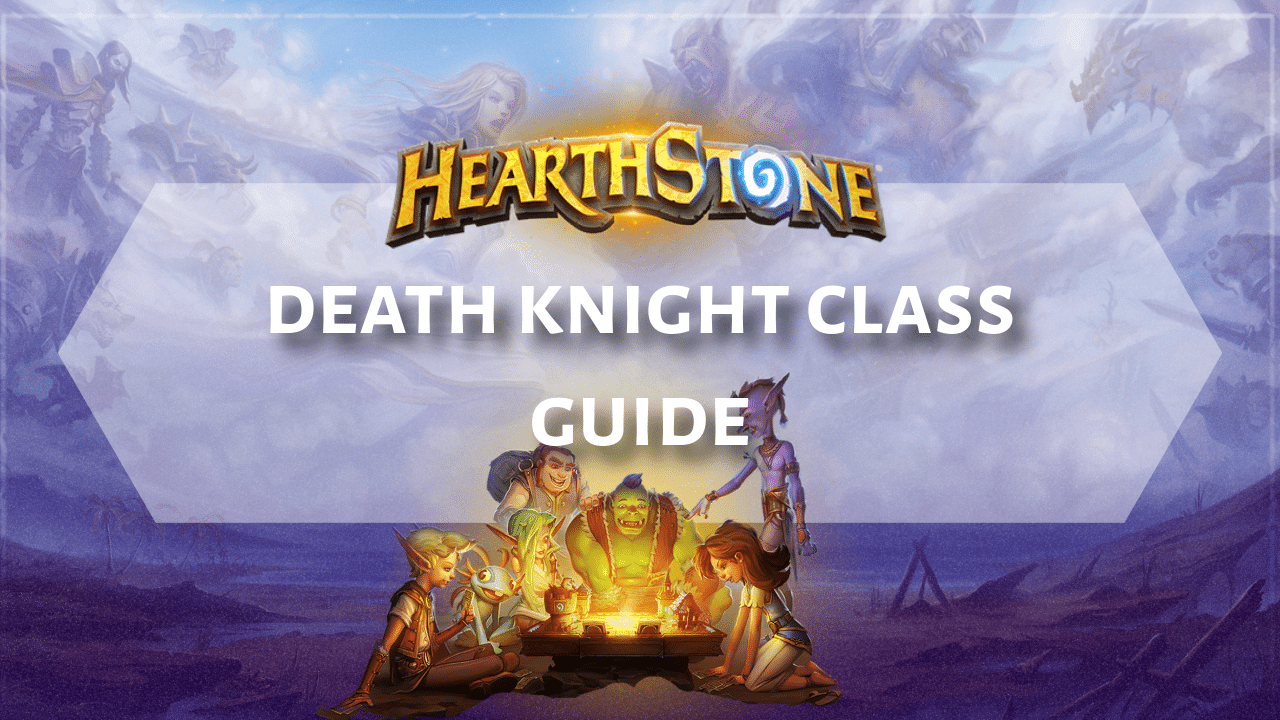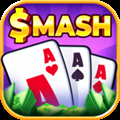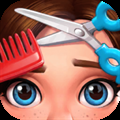Hearthstone Death Knight Class Guide - Theria Games

Hearthstone Death Knight Class Guide: Introduction
The Death Knight is Hearthstone’s 11th playable class, debuting with the March of the Lich King expansion and officially launching on December 6th. This dark and formidable class wields the powers of Blood, Frost, and the Undead, offering a diverse range of playstyles that cater to both control-oriented and aggressive strategies. Whether overwhelming opponents with relentless minions, freezing the battlefield with powerful spells, or sustaining through life-draining abilities, the Death Knight provides players with multiple paths to victory.
What sets the Death Knight apart from other classes are its unique mechanics: Corpses and Runes, both of which add strategic complexity to deckbuilding and gameplay. Corpses are generated whenever friendly minions die and serve as a vital resource that fuels certain Death Knight cards, empowering them with devastating effects. Runes—divided into Blood (Red), Frost (Blue), and Unholy (Green)—determine which Death Knight cards can be included in a deck. Players must carefully choose their Rune combination, as it dictates their deck’s overall strategy and available tools.
With its thematic depth, flexible deckbuilding, and resource-based gameplay, the Death Knight introduces a fresh and engaging playstyle to Hearthstone, making it a compelling choice for both new and experienced players looking to command the power of the Scourge.
Corpses are generated whenever friendly minions die, including the Ghoul summoned by the Death Knight’s Hero Power. These Corpses serve as a unique resource that can be spent to activate powerful card effects, rewarding careful planning and minion usage. Meanwhile, the Rune system—divided into Blood, Frost, and Unholy—determines which cards a deck can include, shaping playstyle and strategic options. Blood specializes in control and sustain, Frost focuses on burst damage and spell synergies, while Unholy excels at swarming the board with Undead minions. These mechanics set the Death Knight apart from other classes, offering deep complexity and flexibility, making it an ideal choice for players who enjoy strategic decision-making, deck customization, and resource management.
Death Knight Class Heroes
Hero Power
Ghoul Charge
- Costs 2 mana and summons a 1/1 Ghoul with Charge.
- The Ghoul dies at the end of the turn, generating a Corpse.
- Upgraded version summons a 2/1 Ghoul.
Replacement Hero Power
Ghoul Frenzy
Ghoul Frenzy is an alternative Hero Power that some cards provide, and it substitutes the Death Knight’s starting Hero Power, Ghoul Charge.
Class/es:
- Death Knight
Cost:
- 2 Mana
Formats:
- Wild
- Twist
Card set:
- Basic
Background race:
- Ghoul
Pulsing Pumpkins
Pulsing Pumpkins is a Death Knight Hero Power card that you can’t directly add to your collection; it’s from the Whizbang’s Workshop expansion.
Class/es:
- Death Knight
Cost:
- 2 Mana
Formats:
- Standard
- Wild
- Arena
Card set:
- Whizbang’s Workshop
Background race:
- Plant
Ravage
Ravage is a Hero Power card, which players cannot collect, that belongs to the Death Knight, Demon Hunter, Hunter, and Warlock classes, and it originates from the Heroes of StarCraft mini-set.
Class/es:
- Death Knight
- Hunter
- Warlock
- Demon Hunter
Cost:
- 2 Mana
Formats:
- Standard
- Wild
- Arena
Card set:
- The Great Dark Beyond
Background race:
- Zerg
Runes
The Death Knight class in Hearthstone introduces a unique playstyle centered around its Ghoul Charge Hero Power, Corpses, and Runes. Ghoul Charge is a 2-mana Hero Power that summons a 1/1 Ghoul with Charge, which dies at the end of the turn, generating a Corpse—a key resource for the class. Upgraded versions of the Hero Power summon a 2/1 Ghoul instead. Corpses accumulate whenever a friendly minion dies and are automatically spent by certain Death Knight cards to power their effects, such as summoning additional minions, dealing damage, or enhancing other abilities.
Runes dictate which Death Knight cards can be included in a deck, allowing players to specialize in one of three distinct archetypes, each with its own strengths and playstyle. Blood Runes (Red) emphasizes survivability, life manipulation, and board control, excelling in slower strategies that rely on high-health minions, healing effects, and removal spells to outlast opponents.
This archetype rewards patience and endurance, making it ideal for players who enjoy control-style gameplay. Frost Runes (Blue) focus on burst damage, spell synergies, Freeze effects, and mana manipulation, allowing for precise, calculated aggression. Frost Death Knights can rapidly cycle through their decks, control the board with freezes, and unleash devastating spell combos, making them a strong choice for tempo-based or combo-oriented decks. These Rune mechanics define the Death Knight class, offering diverse strategies that cater to different playstyles.
Unholy Runes (Green) emphasize swarming the board with Undead minions, generating and consuming Corpses, and excelling in aggressive playstyles. Death Knight decks can be built using three Rune slots, allowing players to fully commit to one Rune type or mix two to create hybrid strategies. Additionally, some Death Knight cards have no Rune restrictions, making them flexible choices for any deck. The combination of Ghoul Charge, Corpses, and Runes makes Death Knight a versatile and strategic class, offering multiple playstyles that range from resilient control to explosive aggression.
Deckbuilding with Runes
When building a Death Knight deck, the Rune combination you equip is determined by the highest Rune requirement among the cards you include. Each card requiring a Rune contributes to the overall deck restriction, meaning you must carefully balance your choices to fit within the Rune limits. A deck can mix Blood, Frost, and Unholy Runes in various combinations, allowing for hybrid strategies, or it can fully specialize in one Rune type to maximize its strengths.
For example, if you include a card that requires two Frost Runes and another that requires one Unholy Rune, your deck will be locked into a “Double Frost, Single Unholy” combination, preventing you from adding cards that require a Blood Rune or three of any single Rune. However, if you choose to include a Triple Rune card, such as Vampiric Blood (Triple Blood) or Lord Marrowgar (Triple Unholy), your deck must fully commit to that single Rune, prohibiting any other Rune types from being included. This system encourages strategic decision-making, as committing to a single Rune grants access to its most powerful cards, while a hybrid approach can offer greater flexibility and cover weaknesses.
Generally, the deeper a deck goes into a specific Rune, the more it benefits from that Rune’s unique strengths, but splashing into a second Rune can help cover weaknesses. Blood Runes focuses on survivability, board control, and life manipulation but may lack Corpse generation without Unholy support. Frost Runes offer burst damage and card draw but can struggle against healing or aggressive opponents. Unholy Runes thrive on swarming the board and using Corpses but may lack direct damage or late-game reach.
General-purpose (Runeless) cards play a vital role in deckbuilding by supporting essential functions, such as Corpse generation (Body Bagger), card draw (Icy Touch), and weapons (Frostmourne). The deckbuilder automatically adjusts available cards as you add them, filtering out incompatible choices. Players can manually refine searches using commands like "Frost:1-2" to find single and double Frost Rune cards, or "school:frost" to differentiate Frost spells from Frost Rune cards. Those who prefer simplified deckbuilding can use deck codes and auto-complete features.
In Arena, the Rune system functions dynamically, shaping your deck as you draft. Unlike in Constructed play, where you choose your Rune combination before selecting cards, the Arena determines your Runes on the fly based on your draft choices. Your first Rune-restricted card establishes the Rune foundation for your deck, dictating which cards will be offered for the remainder of the draft.
For example, if your first pick is Vampiric Blood (Triple Blood), your entire deck will be locked into Blood Runes, preventing any Frost or Unholy cards from appearing in your draft pool. On the other hand, if you choose Acolyte of Death (Single Frost) as your first Rune card, the draft will ensure that no Triple Blood or Triple Unholy cards are offered, keeping your options open for hybrid Rune combinations. This means that each draft decision carries weight, as an early commitment to a specific Rune can significantly influence the power level and synergy of your final deck.
By carefully selecting early Rune cards, players can guide their draft toward their preferred archetype while maintaining flexibility until a firm Rune direction is established. This adaptive system ensures that Arena decks remain balanced and consistent, offering a drafting experience that is distinct from Constructed play while still preserving the strategic depth of the Death Knight class.
Death Knight Cards
At launch on December 6th, Death Knight will have access to 68 class cards for deckbuilding, divided across three sets to support the class’s unique mechanics. The Core Set consists of 32 cards, which will be free for all players upon completing the Death Knight Prologue. This is the largest Core Set ever given to a Hearthstone class, ensuring that Death Knights have the foundational tools needed to experiment with the Rune system and explore different deck archetypes.
The expanded Core Set provides essential cards for each Rune type—Blood, Frost, and Unholy—allowing for strategic deckbuilding without requiring an extensive collection. This generous card pool reflects the complexity and flexibility of the Death Knight class, ensuring that new players and veterans alike have a solid starting point for mastering its mechanics.
26 cards belong to the Path of Arthas set, a special Death Knight-only collection designed to help the class catch up with others. These cards cannot be opened from packs but can be purchased with in-game gold, Runestones, or as part of the March of the Lich King Mega-Bundle. The final 10 cards will be found in March of the Lich King expansion packs and will be craftable after release.
To obtain the Core Set, players must complete the Death Knight Prologue, a Solo Adventure that follows Arthas Menethil’s transformation into the Lich King. Finishing this Prologue will unlock all 32 Core Set cards for free. This is similar to the Demon Hunter’s Prologue, which unlocked the Initiate set.
The Path of Arthas set is available for 2000 Gold or 1500 Runestones for the Normal version and money or 7000 Runestones for the Golden version, which also includes a Diamond copy of Lady Deathwhisper. This set includes 3 Legendary cards (1x), 3 Epic cards (2x), 8 Rare cards (2x), and 12 Common cards (2x), for a total of 26 unique cards and 49 total cards. The Mega-Bundle includes the Path of Arthas alongside 80 expansion packs, 5 Signature Golden Packs, and 2 Signature Legendaries.
March of the Lich King cards can be obtained through expansion packs or manual crafting, allowing players to build and refine their Death Knight decks with new additions. For those looking to acquire these cards quickly, Blizzard has introduced two pre-purchase bundles, each catering to different levels of investment.
The Standard Bundle includes 60 March of the Lich King card packs, two random Legendary cards from the set, and the exclusive Lor’themar Card Back. This option provides a solid foundation for players looking to expand their collection while maintaining flexibility in acquiring cards through regular pack openings.
For a more comprehensive collection, the Mega-Bundle is designed entirely around Constructed play, making it unique among Hearthstone’s expansions. It includes 80 March of the Lich King packs, five Signature Golden Packs, two Signature Legendary cards, the full Path of Arthas set (which contains 26 unique Death Knight cards), the Lor’themar Hunter Hero Skin, and the Lor’themar Card Back. Notably, this is the first Mega-Bundle in Hearthstone history that does not contain Battlegrounds perks, highlighting Blizzard’s strong emphasis on the Death Knight class and Standard format play for this expansion.
Basic Strategies and Gameplay
Death Knight’s unique Corpse mechanic plays a vital role in its strategy, as Corpses are generated whenever a friendly minion dies, including the Ghoul summoned by the Hero Power. Managing Corpses efficiently is essential, as many powerful cards require spending accumulated Corpses to activate their effects. Players must strike a balance between generating Corpses through minion deaths and utilizing them for high-impact plays.
The Undead synergy is another core aspect of Death Knight’s design. The Ghoul Charge Hero Power generates an Undead minion each turn, contributing to the Corpse pool while supporting Undead-based strategies. Many Death Knight cards directly interact with the Undead minion type, including Acolyte of Death, Skeletal Sidekick, and Dark Transformation. Minions with Reborn or those that summon additional minions upon death work exceptionally well with this class, as they provide both Undead synergies and Corpse generation.
Deck types for Death Knight are heavily influenced by Rune choices, shaping playstyle and strategy:
- Blood Death Knight specializes in control and sustain, using removal tools that heal or provide defensive advantages. Cards like Obliterate, Death Strike, and Blood Boil clear threats while offering sustain, while Vampiric Blood and Corrupted Ashbringer enhance survivability. Blood decks also feature expensive, high-impact minions like Boneguard Commander and Soulstealer, reinforcing their tanky, board-control identity.
- Frost Death Knight is focused on tempo, direct damage, and spell synergies, making use of Freeze effects, mana manipulation, and card draw. A Triple Frost Rune deck might include Frostwyrm’s Fury and Overseer Frigidara for board control and burst damage, while Horn of Winter enables mana refresh for powerful combo turns. Key spells like Icy Touch, Glacial Advance, and Howling Blast provide additional damage and crowd control, making Frost decks excellent at attrition or burst-based strategies.
- Unholy Death Knight thrives on aggression and swarming the board, making full use of the Corpse mechanic to overwhelm opponents. Army of the Dead and Lord Marrowgar reward players for amassing Corpses, allowing for massive board swings. Unholy decks focus on summoning Undead minions and leveraging their death effects, creating relentless pressure through wide board states and Corpse-fueled threats.
Tips for New Death Knight Players
On December 6th, players can unlock the entire 32-card Death Knight Core Set for free by completing the Death Knight Prologue, a solo adventure that tells the story of Arthas Menethil’s descent into darkness and transformation into the Lich King. This narrative-driven experience not only introduces the lore behind the class but also serves as a gateway to understanding its unique mechanics.
When constructing a Death Knight deck, mastering the interplay between Corpses and Runes is crucial. Corpses, generated whenever friendly minions die, act as a valuable resource that fuels powerful card effects, making efficient generation and expenditure a key aspect of gameplay. Meanwhile, Rune selections—Blood, Frost, or Unholy—dictate which cards can be included in a deck, shaping its overall strategy. Fully committing to a single Rune grants access to the class’s most powerful specialized cards, while mixing Runes allows for hybrid playstyles that balance strengths and cover weaknesses. Understanding these mechanics is essential for optimizing deck performance and making the most of the Death Knight’s formidable arsenal.
The deck builder provides specialized features for Death Knight, including automatic Rune updates and filtering options, making it easier to experiment with different Rune combinations and explore various playstyles and synergies. Each Rune type has distinct strengths and weaknesses—Blood excels in sustain and control, Frost focuses on burst damage and card draw, and Unholy specializes in swarming the board and using Corpses efficiently. Players should carefully consider these aspects when designing their deck.
Identifying synergies is key, such as pairing cards that generate Corpses (e.g., minions with Deathrattles or the Hero Power) with cards that consume Corpses for powerful effects (e.g., Marrow Manipulator or Army of the Dead). Additionally, Runeless Death Knight cards provide crucial utility and can fit into any Death Knight deck, making them valuable inclusions.
For players focusing on Frost Death Knight, exploring example decks can provide insight into card draw, board control, and burst damage strategies. Meanwhile, a minor visual note—Death Knight minions originally had a palette-swapped Warrior border, which stood out as Demon Hunter received its own unique minion border.
During matches, Death Knights have two key mechanics that influence gameplay: Corpses and Runes. The Corpse count, which tracks the number of friendly minions that have died, is displayed beneath the player’s mana crystals. This visible resource lets both players anticipate potential Corpse-spending plays, adding an extra layer of strategic depth and counterplay.
Rune investments, on the other hand, are determined during deckbuilding and remain hidden from opponents throughout the match. While players can infer an opponent’s Rune composition based on the cards they play, there is no direct way to see which Runes their deck is built around. This means that until key cards are revealed, a Death Knight’s strategy may remain uncertain, allowing for surprise tactics and strategic deception.













